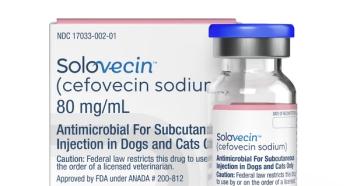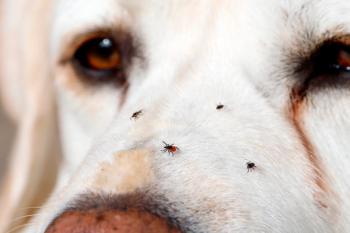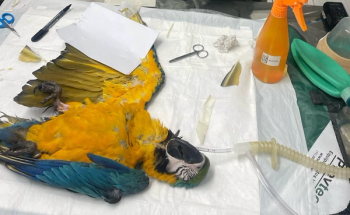
Threats in the backyard: Why wildlife is best seen from afar
To your veterinary clients, it may seem like deer and other wildlife are cute additions to their local landscape, but these transient visitors can pass disease to their pets.
Getty Images
In understanding the diseases that wildlife carry, it's important to know that wildlife aren't pets and shouldn't be treated like domesticated animals. This includes making property unattractive to wild animals, including raccoons, opossums, coyotes and similar wild animals by limiting available food. Steps clients can take to achieve this include:
• Not leaving pet food outside
• Keeping livestock food covered and in a shelter
• Minimizing access to attics or other parts of the house where animals may nest
• Keeping compost piles away from dwellings.
Which diseases to worry about
Numerous important zoonotic or domestic animal diseases associated with wildlife may exist in the backyard or farm, including rabies, cutaneous or visceral larva migrans due to several nematode species, leptospirosis, canine distemper, parvovirus and salmonellosis. Depending on the geographic location, rabies virus may be found in raccoons, foxes, coyotes, skunks or bats. However, free-roaming cats are the species most associated with rabies exposure in humans because people, especially children, are more likely to have direct contact with cats.1 Mammals including raccoons, bears, coyotes, opossums and bobcats or feral cats can shed Baylisascaris species, Echinococcus species, hookworms, Toxoplasma gondii, Sarcocystis neurona, Neospora caninum, or Toxocara species parasites. With the exception of S. neurona and N. caninum, all of these parasites are zoonotic. Sarcocystis neurona can lead to equine protozoal myeloencephalitis, and N. caninum can cause abortion in cattle, goats and sheep.
Human-instigated dangers
Bird feeders or waterers that aren't cleaned frequently or contain damp or moldy food can be a source of disease to wild birds and potentially other species. The large number of birds gathering at feeders or waterers leads to efficient transmission of various pathogens including Salmonella species, Trichomonas gallinae, avian poxvirus, and Aspergillus species. These feeder diseases are considered some of the most important diseases impacting songbird populations. Feeders and waterers should be cleaned once every two weeks with a 10% bleach solution, and any moldy or wet feed should be discarded as soon as possible. If an outbreak occurs associated with feeders or waterers, clients should stop feeding and watering birds for at least two weeks to break the transmission cycle.
Even more worries
Other relevant wildlife species to backyards include cottontail rabbits, various squirrel species, woodchucks, wild turkeys, white-tailed deer and other deer species. While numerous diseases have been reported from these species, most appear to be specific to wildlife and have little impact on domestic animals or humans. Notable exceptions include reports of rabies in woodchucks, tularemia in cottontails, and Parelaphostrongylus tenuis (meningeal worm) and Fascioloides magna (liver fluke) infections in deer. Meningeal worm infection in livestock including goats, sheep, llamas, alpacas and, to a lesser extent, horses and cattle can lead to neurologic deficits and potentially death due to migration of the larvae in the central nervous system. Liver flukes are especially pathogenic to sheep and may affect other ruminants to a lesser extent.
Wild animals can harbor ectoparasites such as mites, fleas and ticks that may be a source of infection for pets, livestock or even humans. Minimizing access of wildlife, as well as keeping grass cut short, removing leaf litter, and ensuring that pets are kept on year-round tick and flea as well as heartworm preventives, are excellent measures to protect animals from these ectoparasites and their associated pathogens.
Reference:
1. Gerhold RW, Jessup DA. Zoonotic diseases associated with free-roaming cats. Zoonoses and Public Health 2013;60(3):189-95.
Dr. Richard Gerhold works in the Department of Biomedical and Diagnostic Sciences in the College of Veterinary Medicine at the University of Tennessee.
Newsletter
From exam room tips to practice management insights, get trusted veterinary news delivered straight to your inbox—subscribe to dvm360.






